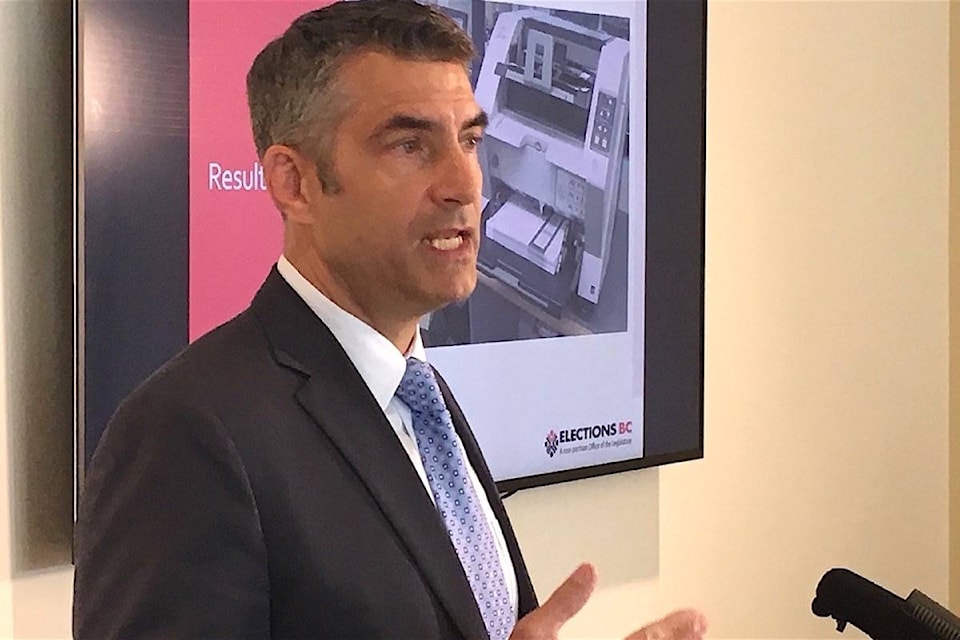British Columbia residents have voted to keep the existing electoral system by a margin of 6.1.3 per cent, over three options proposing proportional representation systems.
The referendum asked voters if they wished to keep the existing First Past the Post (FPTP) electoral system or move to a proportional representation system that included Mixed Member, Dual Member or Rural-Urban.
“People took part in the largest public engagement in B.C.’s history and gathered in communities around B.C. for town halls and discussions about how we vote in our province,” said B.C. Premier John Horgan, in a statement.
“British Columbians have now spoken and chosen to stick with the current voting system. This referendum was held because we believe that this decision needed to be up to people, not politicians. While many people, myself included, are disappointed in the outcome, we respect people’s decision.”
Kootenay East MLA Tom Shypitka reacts to electoral reform referendum result. pic.twitter.com/CeFRnQiYsf
— Trevor Crawley (@tcrawls) December 21, 2018
In Kootenay East, voters decided to keep FPTP by a margin of 71.8 per cent over the three proportional representation options, the most popular of which was Mixed Member.
“I couldn’t be happier, the people of British Columbia have spoken,” said Kootenay East MLA Tom Shypitka. “I think the result is exactly what we thought it would be in that the ballot was convoluted. There was three options, two of which have never been used anywhere in the world before, one that was rejected twice by an impartial, unbiased citizen’s assembly.
It’s exactly what we thought, I couldn’t be happier and, like I said, the people have spoken. It’s great news.”
Kootenay East cast 12,569 referendum votes in total, with 9,023 (71.8 per cent) in favour of FPTP and 3,544 (28.2) in favour of proportional representation. In the first round of voting, Dual Member received 1,769 (28 per cent), Mixed Member received 2,274 (36 per cent) and Rural-Urban received 2,274 (36 per cent).
Provincially, Rural-Urban was dropped from the second round of voting after receiving the lowest amount of votes. In Kootenay East, that shifted secondary preferences of voters choices on the ballot, meaning Mixed Member ended up with 3,519 (61.9 per cent) and Dual Member with 2,158 (38 per cent).
There have been three electoral reform referendums over the last 13 years, which have asked voters to move to a Single Transferable Vote (STV) in 2005 and 2009. The 2005 referendum result supported a move to the STV system, however, it fell just shy of the 60 per cent threshold of valid votes needed to make it a binding result.
“I think this puts it to bed for quite some time now,” said Shypitka. “I think people are happy. Nothing is perfect; I’ve stated this all along — First Past the Post isn’t a perfect system, but no system really is so I’m happy with the way it’s gone and I congratulate people on both sides for participating and taking part in this process.”
trevor.crawley@cranbrooktownsman.com
Like us on Facebook and follow us on Twitter
